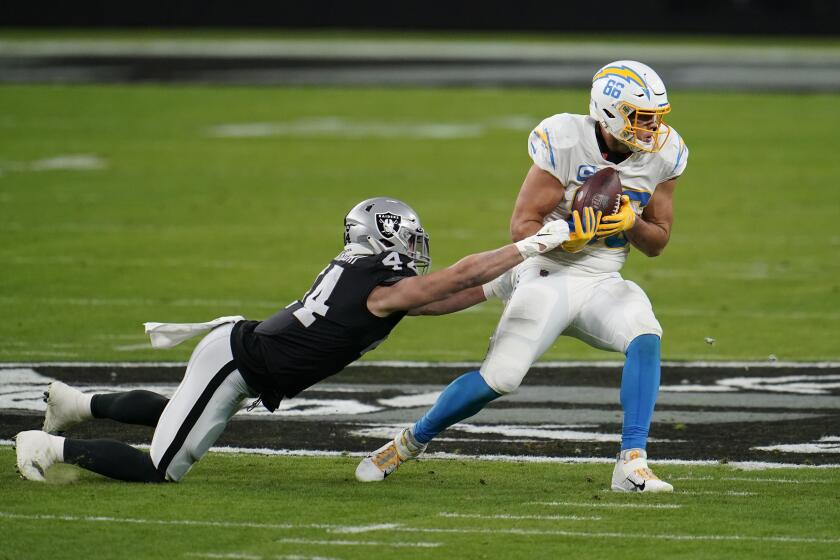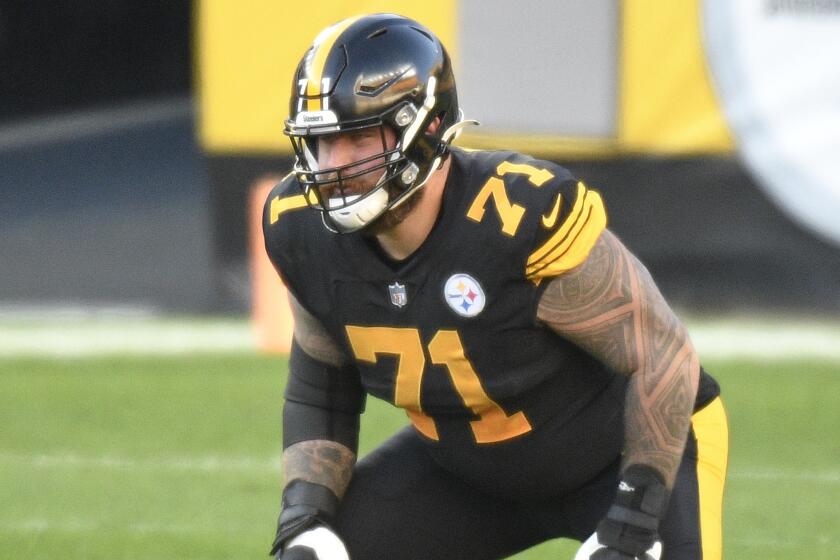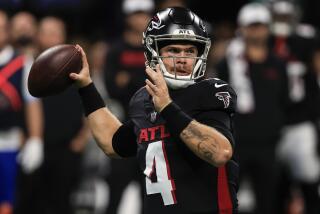Chargers line up replacements in free agency, but did they get better?
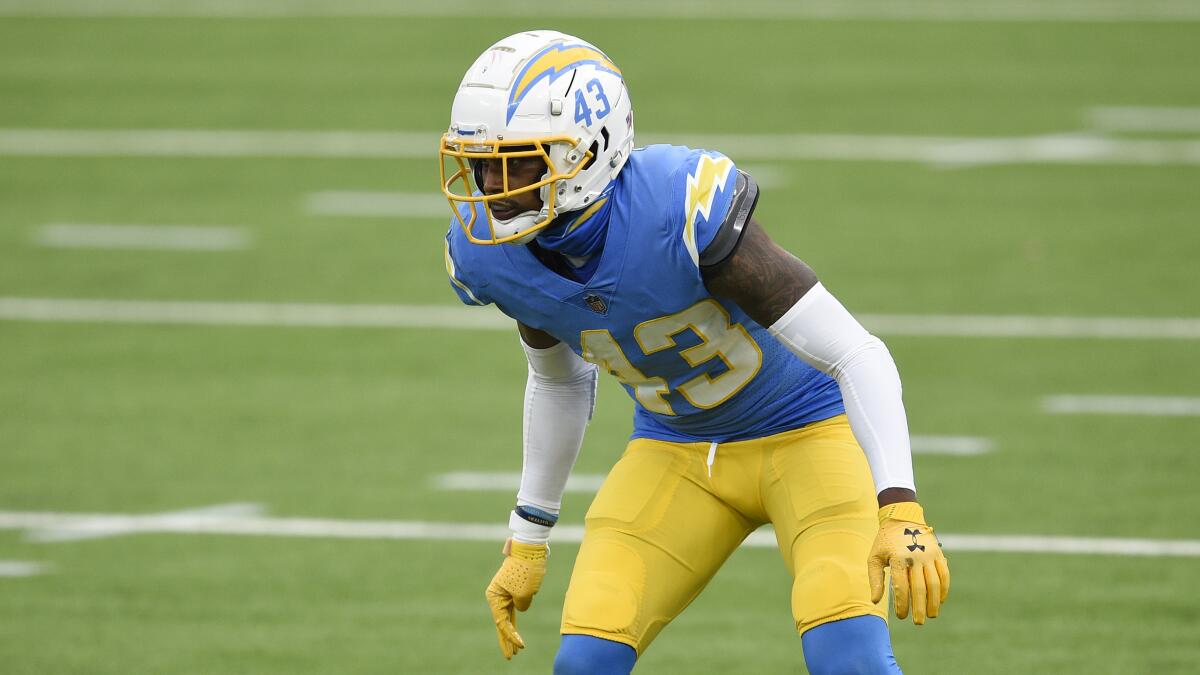
- Share via
In the middle of all this hardhearted NFL business, the Chargers this week offered a moment with genuine feeling.
Cornerback Michael Davis agreed to a three-year contract extension and, later on a videoconference with reporters, was asked how his mother, Ana Martinez, reacted.
“She cried,” said Davis, who grew up in Glendale. “She was very happy because she knows that we’ve been through a lot. I’m just happy to see her happy. She’s just happy that I’m able to stay home and be close to her. That’s what matters. That and, obviously, football too. But family comes first.”
Originally undrafted, Davis signed his deal — a guaranteed $15 million and worth up to $25.2 million — on Wednesday, the first day of the NFL’s new league year.
Now that the 2021 season formally has arrived, the Chargers can resume their extensive offensive line rebuild, while addressing other needs, notably at tight end, cornerback, safety, edge rusher and, possibly, backup quarterback.
In the draft beginning in late April, they have nine picks — starting with No. 13 overall — and four in the top 100. What happens between now and then in free agency could influence those selections.
The Chargers lost tight end Hunter Henry, who reached a three-year deal with New England. Might they pursue a trade for Philadelphia’s Zach Ertz?
The Chargers entered the week with about $45 million in effective cap space, according to overthecap.com, and have roughly $18 million of room left when factoring in the money needed to sign their 2021 draft class.
That’s a healthy total in the year of the collapsing cap and enough to pick up a few more pieces as they look to arm new coach Brandon Staley with a roster capable of improving on a 7-9 record.
They’ve already added center Corey Linsley (five years, $62.5 million with $26 million guaranteed) and guard/tackle Matt Feiler (three years, $21 million with $13 million guaranteed).
Linsley’s deal is the richest ever for a center and marks a bold statement in the team’s attempt to overhaul a line that struggled with inconsistency and injuries in 2020.
Right tackle Bryan Bulaga will try to bounce back from a rough year during which various ailments limited him to only 38% of the Chargers’ offensive snaps.
That leaves one tackle and one guard spot to be filled, with linemen such as Alejandro Villanueva and Reilly Reiff available.
Rashawn Slater (Northwestern), Christian Darrisaw (Virginia Tech) and Alijah Vera-Tucker (USC) remain popular possibilities with the 13th pick.
The Chargers’ biggest free-agent loss was a doozy, tight end Hunter Henry agreeing to a deal with New England.
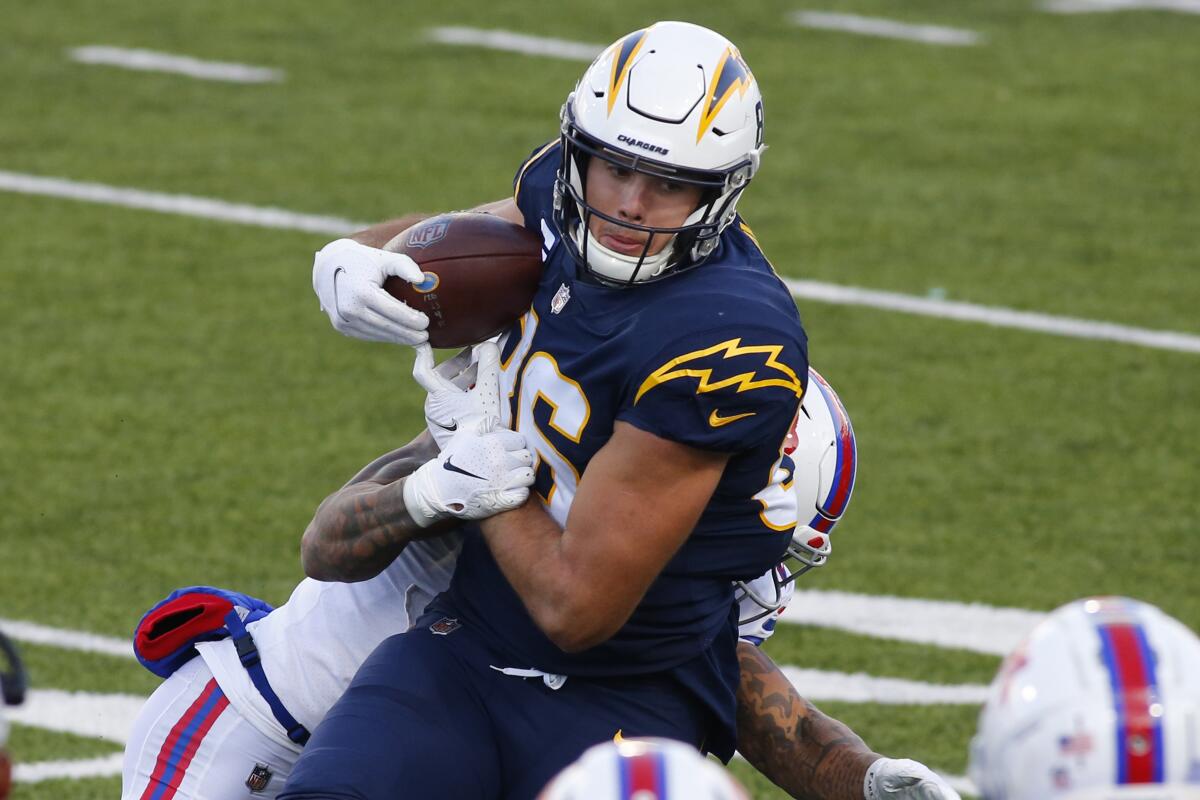
The good news is there are plenty of affordable and proven options available, including free agents Kyle Rudolph and Jared Cook. And some team almost certainly is going to trade for Philadelphia’s Zach Ertz.
The Chargers’ developed another hole when cornerback Casey Hayward was released in a salary cap move.
Veteran Richard Sherman is the headline name of a free-agent corner group that also features Malcolm Butler and Troy Hill, who played for the Rams last year when Staley was the defensive coordinator.
The pool of options was sweetened this week when Tennessee released Adoree’ Jackson. The former USC Trojan and 2017 first-round pick has been recognized for his cover skills on the outside but missed most of last season because of a knee injury.
The Chargers’ other key free-agent loss was safety Rayshawn Jenkins, who departed for Jacksonville after emerging the last two years as a starter and a favorite of the Chargers’ previous coaching regime.
With Staley and new defensive coordinator Renaldo Hill revamping the scheme, Jenkins apparently was no longer a priority. The best safety available is Anthony Harris, followed by Kareem Jackson and Xavier Woods.
The Chargers already have 2019 second-round pick Nasir Adderley on the roster. He started 14 games last year after Derwin James’ injury forced the secondary to be shuffled.
The Chargers address their offensive line needs by reportedly agreeing to deals with former Packers center Corey Linsley and ex-Steelers guard Matt Feiler.
Adderley was heralded for his ballhawking skills coming out of Delaware and has shown promise. But he’s also struggled, his standing among the new coaches something still to be determined.
During his one season with the Rams, Staley was celebrated for his ability to maximize the potential of players to career-high levels. He and Hill will have an opportunity to double-down on that theme this fall.
Under Staley, the Chargers will be switching to a 4-3, a move that won’t require significant roster adjustment. But they could use pass-rush help off the edge, particularly with Melvin Ingram being a free agent.
When veteran Tyrod Taylor agreed to a deal with Houston on Tuesday, No. 2 quarterback behind Justin Herbert officially turned into a question mark.
Easton Stick has been a Charger since being drafted in the fifth round in 2019. But he has appeared in only one game for just two snaps during the regular season, which is hardly reassuring.
The Chargers figure to be looking for a backup with more experience, someone they trust can to win a game, if necessary. There’s a lot of ways they could go, from — just for fun — Joe Flacco to Mike Glennon.
And it’s worth mentioning that C.J. Beathard, familiar with the Kyle Shanahan system and the grandson of former Chargers general manager Bobby Beathard, also is a free agent.
More to Read
Go beyond the scoreboard
Get the latest on L.A.'s teams in the daily Sports Report newsletter.
You may occasionally receive promotional content from the Los Angeles Times.

